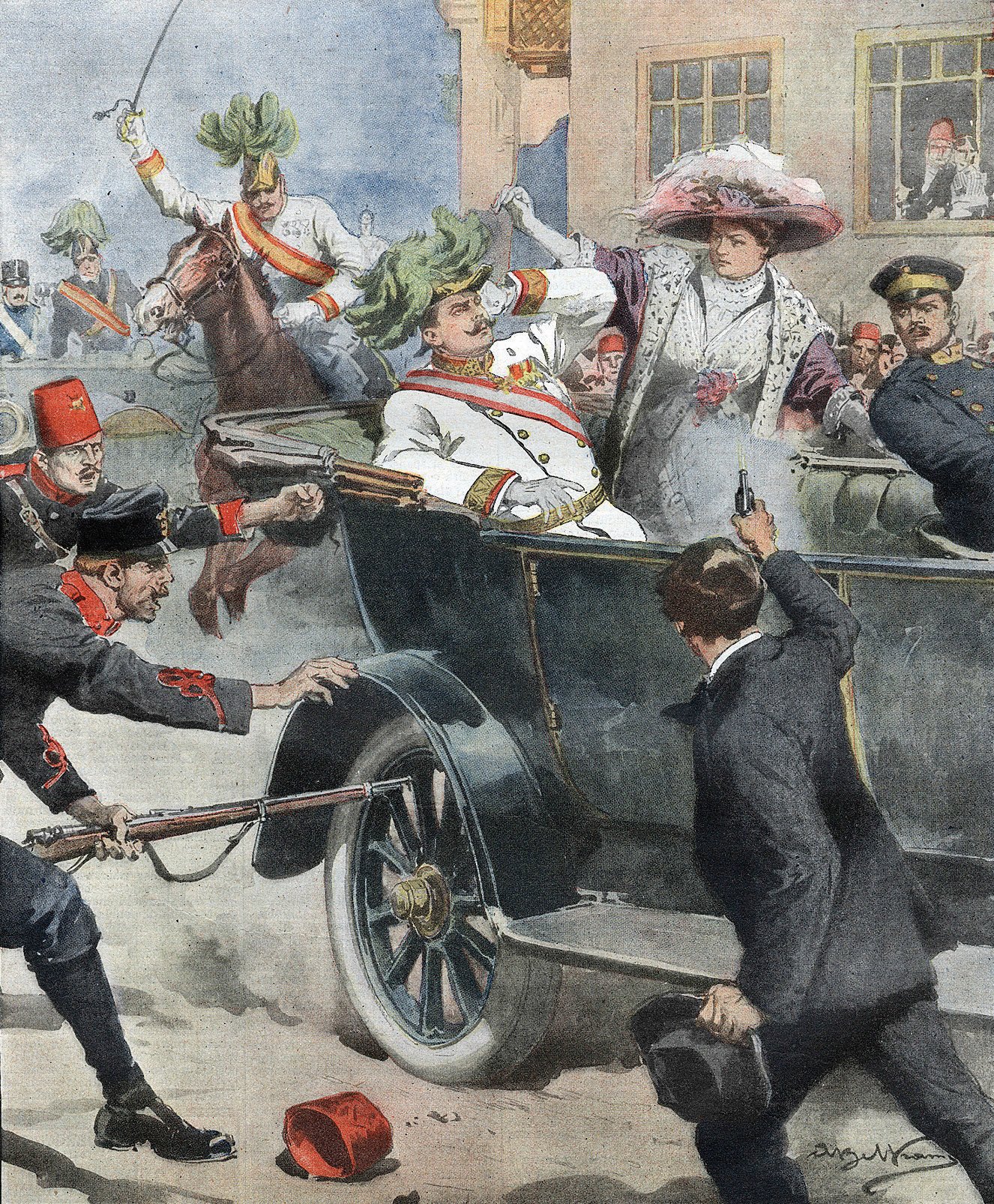
AN EXAMPLE OF BROTHERHOOD AND UNITY FROM 1914
Selected and edited by: Ekrem Tucaković, PhD, Riyasat of the Islamic Community in Bosnia and Herzegovina • Illustration: The first page of the edition of the Domenica del Corriere, an Italian paper, with a drawing by Achille Beltrame depicting Gavrilo Princip killing Archduke Franz Ferdinand of Austria in Sarajevo (source: Wikipedia, public domain)

REVISITING THE OLD PUBLICATIONS
Muhamed Džemaludinović
In our country, a lot of attention has recently been paid to studying our political development in the 19th and 20th century. In this respect, many studies have been published which dealt with the most recent history of Bosnia and Herzegovina. Among other things, these studies extensively discussed events related to the assassination of Archduke Franz Ferdinand in Sarajevo and described anti-Serb demonstrations which began immediately after the assassination, on the same evening, and then spread to some other towns as well. (...)
What significance should be attached to these demonstrations, who was behind them, how the participants were recruited is clearly shown in Kranjčević's memories. He watched the demonstrations. “The procession was headed” – he writes – “by a well-dressed man with a list of houses or shops which were Serbian and which were supposed to be attacked and destroyed. No Serb who was not on the list was hurt. People heading the procession carried a picture of Franz Ferdinand and Franz Joseph, and the demonstrators were followed by the police, who protected them and made sure that nobody hampered their “patriotic” work. The police were followed by the army, who surrounded the destroyed goods from shops and broken furniture from houses and protected them from plunder. The demonstrators mostly consisted of scum whom the police picked up on the streets of Sarajevo and held in prison during Franz Ferdinand's visit, to make Sarajevo look more beautiful and to prevent riots, since the scum could get drunk and cause commotion when they began to yell and got into fight. This scum was now released and they were entrusted with publicly showing disgust of the people loyal to Austria with the criminal assassination of Austrian heir to the throne and his wife. The scum, furious because they had sat in prison without any fault of their own, took revenge on innocent citizens, and savagely destroyed everything. They also took away everything that was valuable, to ease their grief for Franz Ferdinand.”
Another representative of the revolutionary Yugoslav youth of the time, Drago Ljubibratić, assessed the demonstrations as follows: “These were not demonstrations of Muslim and Croat population, as was claimed by Austro-Hungarian side, but rather of the lowest scum, which consisted of all religions.“ The same author cited Gluck's data, according to which the rabble, when they entered Piruša – a Serbian neighborhood – was confronted by Muslims, who said that they could reach their neighbors Serbs only over their dead bodies (“Gavrilo Princip“, p. 237.).
With respect to the demonstrations, all the authors we cited missed a detail, which is so important that it must not be forgotten. Hadži Murat effendi Šećeragić was the only one who attempted to save this detail from oblivion in his speech during the constitutional debate in our Constituent Assembly in Belgrade in 1945.
The detail pertains to public condemnation of anti-Serb disturbances. Immediately after the assassination, these disturbances were severely condemned by a newsletter of the Association of Bosnian and Herzegovinian Ilmijja (religious officers) “Jeni misbah”, in an article by the editor-in-chief Sakib Korkut. The first issue of the newsletter, published immediately after the assassination on 2 July 1914 (year III, number 14) published an article which said as follows, among other things:
“However, we cannot remain silent about those who attacked individuals' private property and lost their self-control to the extent that they desecrated even the sanctity of the doorstep. It is vandalism and barbarity which cannot be excused, and we particularly condemn it because the rabble of these thugs included a high percentage of Muslims, even form the lowest layers of society.
Private property must be sacred and inviolable, and attack on someone else's property – even if the attack is similar to burning spahis' hay, wheat and houses – is not and cannot be anything but a direct and flagrant violation of Islamic regulations.
We therefore disavow the thoughtless and non-Islamic action of these thugs and we feel that it is our duty to ask all our brothers – Muslims, to refrain from such outbursts on any occasion in the future. It only degrades us.”
Korkut had the full support for this article by raisu-l-ulama. In his famous speech at the session of Constituent Assembly on 21 April 1921, Korkut literally said the following:
„I was not alone. When the head of government of the time and his head of department of education asked raisu-l-ulama if he could fire Korkut from the editorial board and if Cyrillic alphabet could be excluded from “Misbah”, raisu-l-ulama replied as follows: 'I agree with every word the author wrote and claim that I bear the full responsibility, since I gave him instructions to write as he did.'
I have already said that, as the editor-in-chief, I wrote according to instructions of the Association... And what was the response to the request by government? Raisu-l-ulama replied that he could not fire me, and I responded to the government's request about elimination of Cyrillic alphabet by arranging that the editorial in the following issue be printed in Cyrillic alphabet, in the Cicero typeface.” (“Pravda”, newsletter of Yugoslav Muslim organization, number 46/284 of 28 April 1921)....
The first page of the edition of the Domenica del Corriere, an Italian paper, with a drawing by Achille Beltrame depicting Gavrilo Princip killing Archduke Franz Ferdinand of Austria in Sarajevo (source: Wikipedia, public domain)
Source:
Muhamed Džemaludinović (Muhamed Hadžijahić), „Jedan primjer bratstva i sloge iz 1914. godine“, Glasnik Vrhovnog islamskog starješinstva u FNR Jugoslaviji, XII/1961, no. 10-12, pp. 406-408.
